Bridge hunting – CNR Ogden
The train bridge that is the subject of this report is located in the Calgary community of Ogden and carries the CNR railway line over a canal, bike path, more train tracks, and finally a busy road. At just over a century old, the fine structure look ready to serve for another hundred years. To a bridge hunter this one is rather interesting as it’s not built to a single design, but rather each span is different and unique in its construction (read on to find out why).
The line that it supports was built by the Canadian Northern Railway (CNoR), which opened to traffic in 1914. It came in from a point just east of Edmonton, travelling south through Drumheller before heading west and terminating in Calgary. The CNoR company, always on shaky ground financially, was folded into the government controlled CNR system, along with some competitors, in the early 1920s. CNR today is privately owned.
In the past, this line travelled into downtown Calgary. It’s been cut back and today ends at an industrial park a couple kilometres to the northwest. Along the way, the line also crosses the Bow River. There are only a handful of customers on the this section of track and so trains are short and infrequent. Passenger trains used to pass by here, travelling between Edmonton and Calgary.
The structure was built by the Manitoba Bridge and Iron Works of Winnipeg in 1913. The east span is so marked. Were the other spans built by them at the same time? Presumably. That company was a prolific builder of bridges across western Canada in the first few decades of the twentieth century.
This section is a Pratt Truss design and is rather interesting as the two side trusses are somewhat offset from each other. The crossing of the canal is at an angle and this allowed the span to be somewhat shorter then if the two sides were completely parallel and inline.
Technical alert! In the Pratt design the diagonal elements are under tension and the vertical ones, compression. Diagonals always slope down towards the centre. There is a often an “X” crossing of diagonals at the centre of the span. Not always though.
Even though this span is a century old it has no trouble handling the heavier locomotives and rail cars of today (railways ALWAYS overbuild). In fact, since the line is now light with traffic, it’ll likely never need to be replaced.
The Pratt design is a common style of railway bridge and many were built the first few decades of the twentieth century. Many still remain in use. They can be used singly in spans up to 75m, or in longer crossings, combined with more Pratt spans or spans of other types (as seen here) supported by intermediate piers of concrete or steel.
The remaining spans are a curious assortment of wood trestle (a short section), two different styles of deck plate girder spans, one on each end, and a through plate girder span (technically half-through plate sometimes called a Pony Truss). This mix is simply due to the varied terrain and obstacles that had to be crossed. The distance over the canal and low clearances underneath necessitated a long uninterrupted top supported span, so a Pratt design. The CPR railway crossing required something of sufficient clearance but not much length, so a through pate design. The other spans had no real restrictions on them, so they could be built the most economical way, meaning deck plate spans were used.
Supporting it all is two concrete piers (Pratt section) along with some steel bents between the plate spans. The short wood trestle ties together two neighbouring spans over a raised embankment. One of the deck plate spans has has a deeper centre skirt. It’s longer than the other and needed this to help stiffen it.
When the bridge was built the area around it was for the most part bare and open prairie, quite a distance from Calgary. Today it’s deep inside the city.
Seen under the Pratt span in the Western Irrigation District Canal. This is fed by the Bow River. It heads east of town and provides irrigation to farms located in that dry-belt region. It was built in the early part of the twentieth century by the CPR. A sign along the pathway warns one that they shouldn’t jump from the train bridge into the canal. Hmmm.
Passing underneath the bridge is the CPR’s east/west mainline, which was built in the 1880s. It’s a busy section of track that sees dozens of trains per day. Not far away is that railway’s Bonnybrook train bridge over the Bow River, which collapsed during the spring 2013 floods (see the post, Collapsed Bonnybrook train bridge).
The CNR bridge also passes over Ogden Road, once the main route into the nearby community of the same name. Before 1950, a streetcar used to travel along this road.
From the west end of the bridge we have a good view of downtown Calgary. There are still some old telegraph poles standing here. Nice. Also nearby was an old railway tell-tale sitting in the grass. Curios what that is? Let me tell you – a pole supported an arm which extended over the tracks. Some ropes hung down from the arm and these would brush against a crew member riding atop a moving car, warning them that were was a possible obstruction ahead (the bridge in this case). Riding on the roof of a moving train? How dangerous is that? In fact it was common practice at one time but was outlawed in the late 1960s I believe. This tell-tale was simply thrown aside when pulled up.
The CNR slogan “Canadian National Railways, Courtesy and Service”, is painted on one span, This was applied to many company structures in the 1920s-1960s period.
The bike path we saw earlier travels all the way from Calgary to Chestermere (some 20km away) and follows the canal the entire route. We’ve biked some of it. See the report: Calgary to Chestermere (and back) canal pathway cycle.
To reach the east end of the CNR railway bridge we had to walk down a bike path for perhaps a kilometre. Along the way, we pass an old road bridge, the former 50th Avenue canal crossing, now used only by pedestrians and bikes. It’s a simple deck girder style and the builders’ plate tells us it was made in 1964. One problem with it when it was open was the busy CPR mainline level crossing at its west end. Slow moving trains caused many delays and backups. The replacement bridge (early 2000s I think) was built right beside the old structure and it passes over both the canal and those formerly troublesome train tracks. Things flow better now.
A fence prevents us from simply walking under the bridge to reach the other end to photograph it. We had to backtrack down the pathway and then drive across the current 50th Avenue bridge and then continue down Ogden Road. Because the east end requires some work to get to (not that much really, not for us anyway), the bridge is rarely photographed from that angle.
To see more bridges we’ve explored, follow these links…
Bridge hunting – Okotoks Alberta.
Bridge hunting – Swalwell Alberta.
East Coulee road./rail bridge.
If you wish more information on what you’ve seen here, by all means contact us!
Date of adventure: June, 2014.
Location: Calgary, AB.
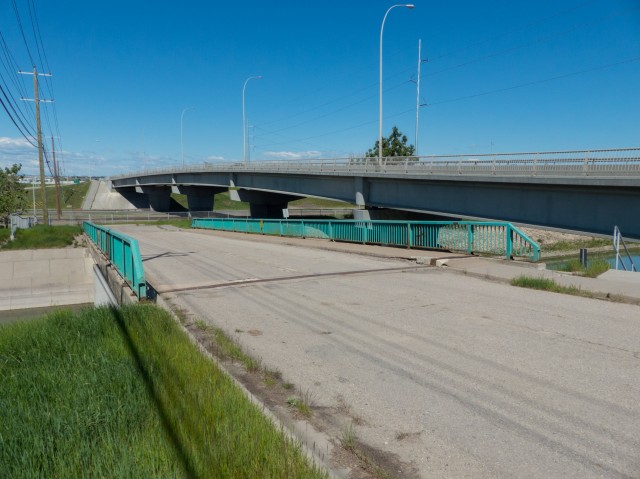
We pass an old road bridge, now closed to traffic.
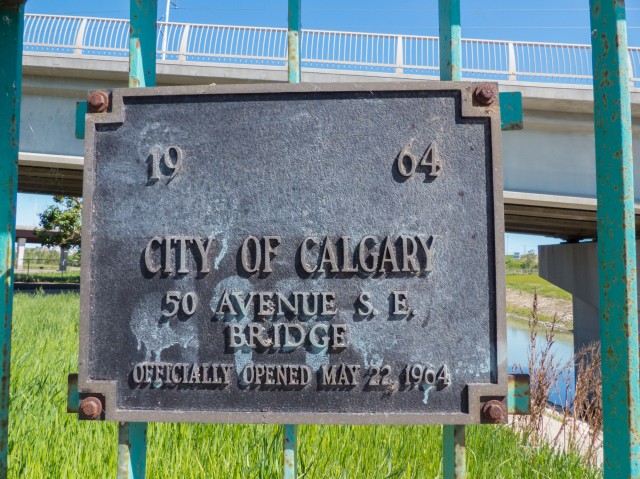
It was built in 1964.
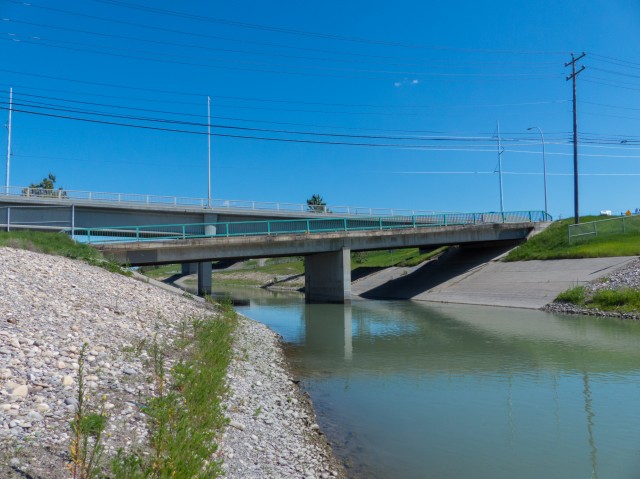
The replacement bridge can be seen in behind.
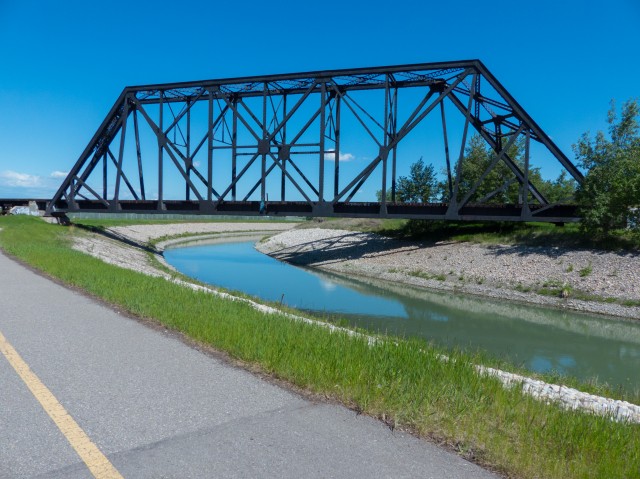
This railway bridge belongs to the CNR and crosses a canal…
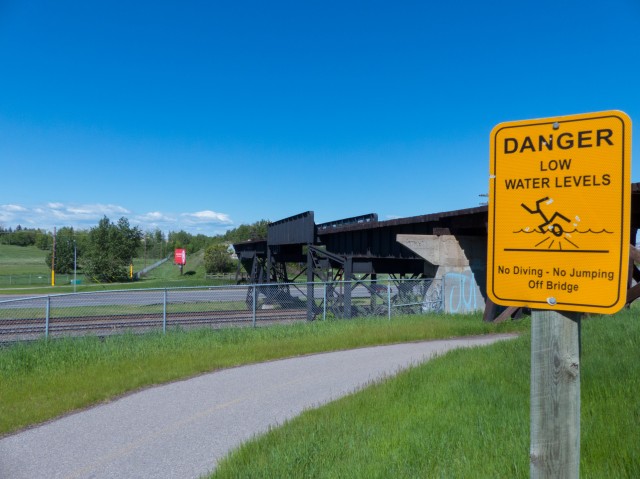
…a bike path, more tracks and finally a road.
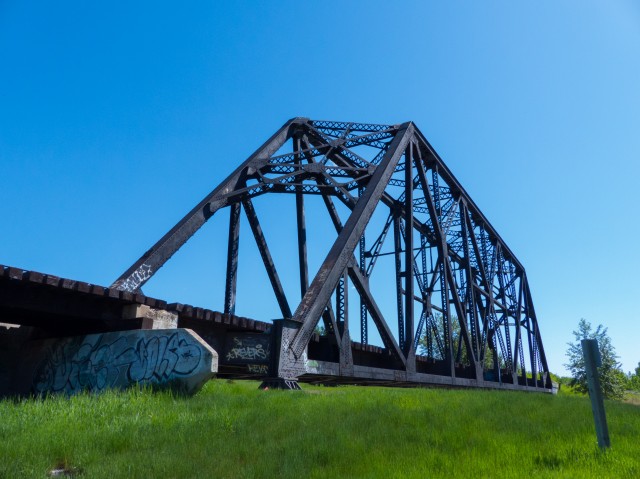
The east span is a Pratt Truss design. Note the two sides are offset.
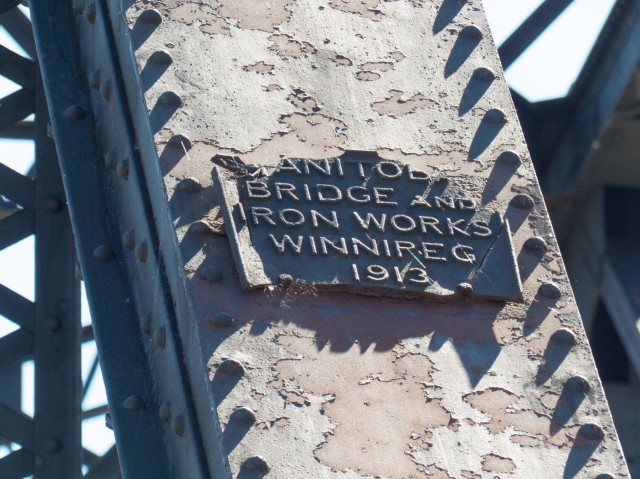
The Manitoba Bridge and Iron Works built this structure just over a century ago.
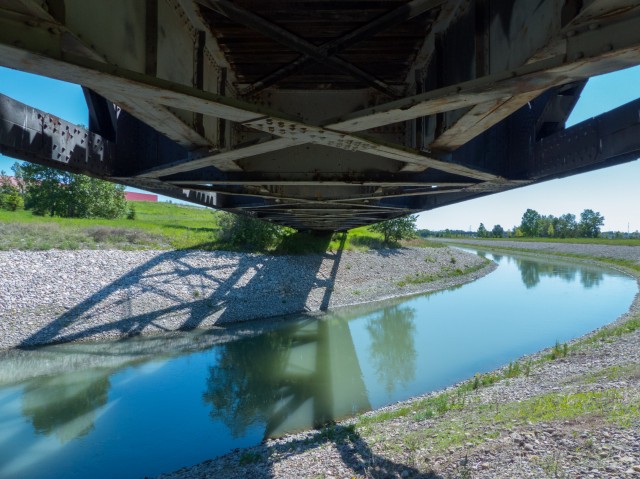
This is the Western Irrigation District canal which heads east from Calgary.
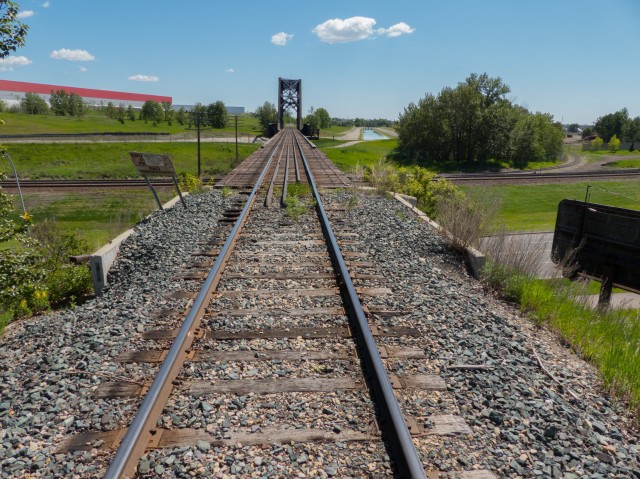
We move to the west side of the structure.
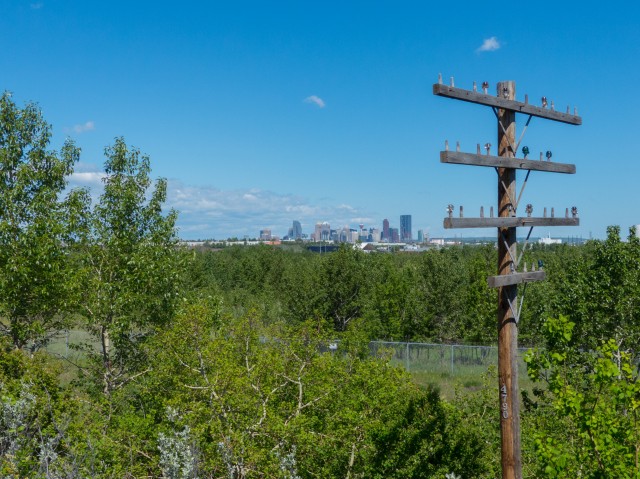
Looking left we see an old telegraph pole and in the distance, downtown Calgary.
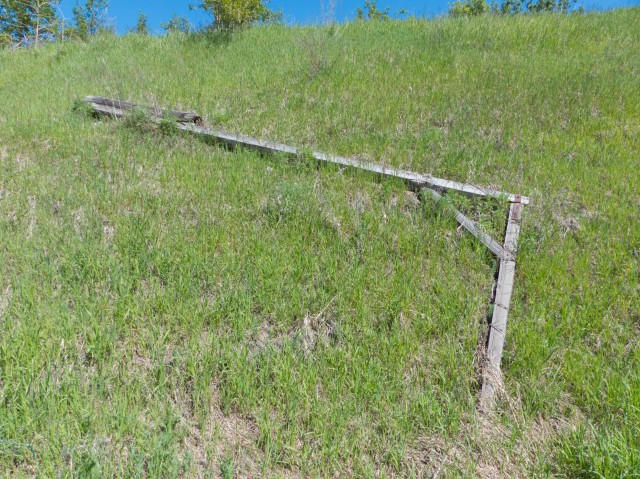
This is called a tell-tale. Read the post to find out what that is.
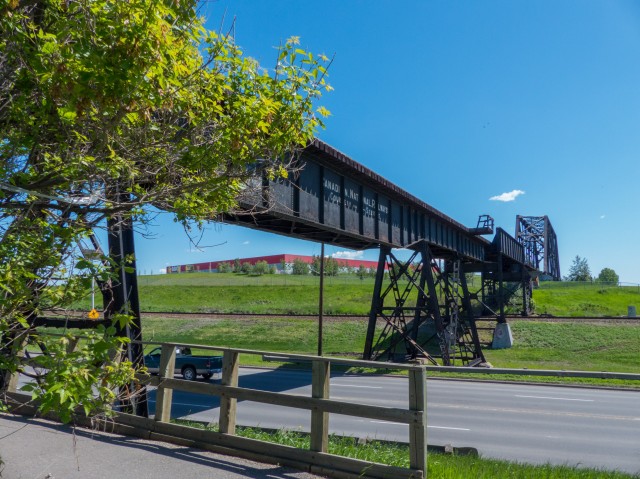
The west spans are a mix of deck plate and through plate designs.
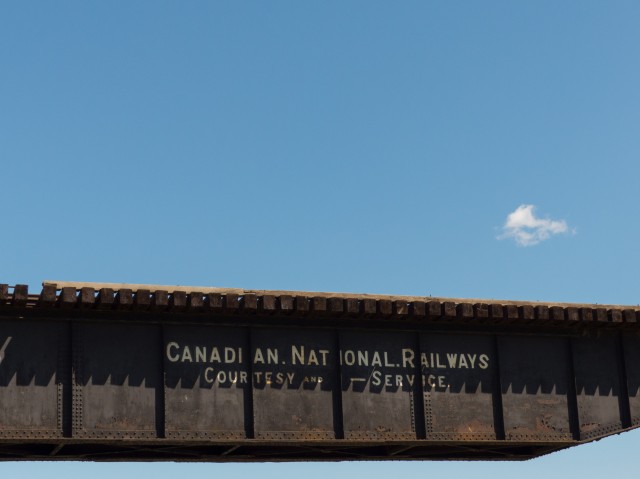
Canadian National Railways, Courtesy and Service.

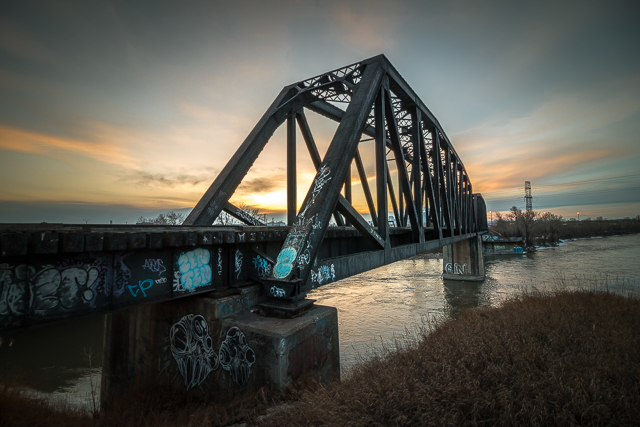
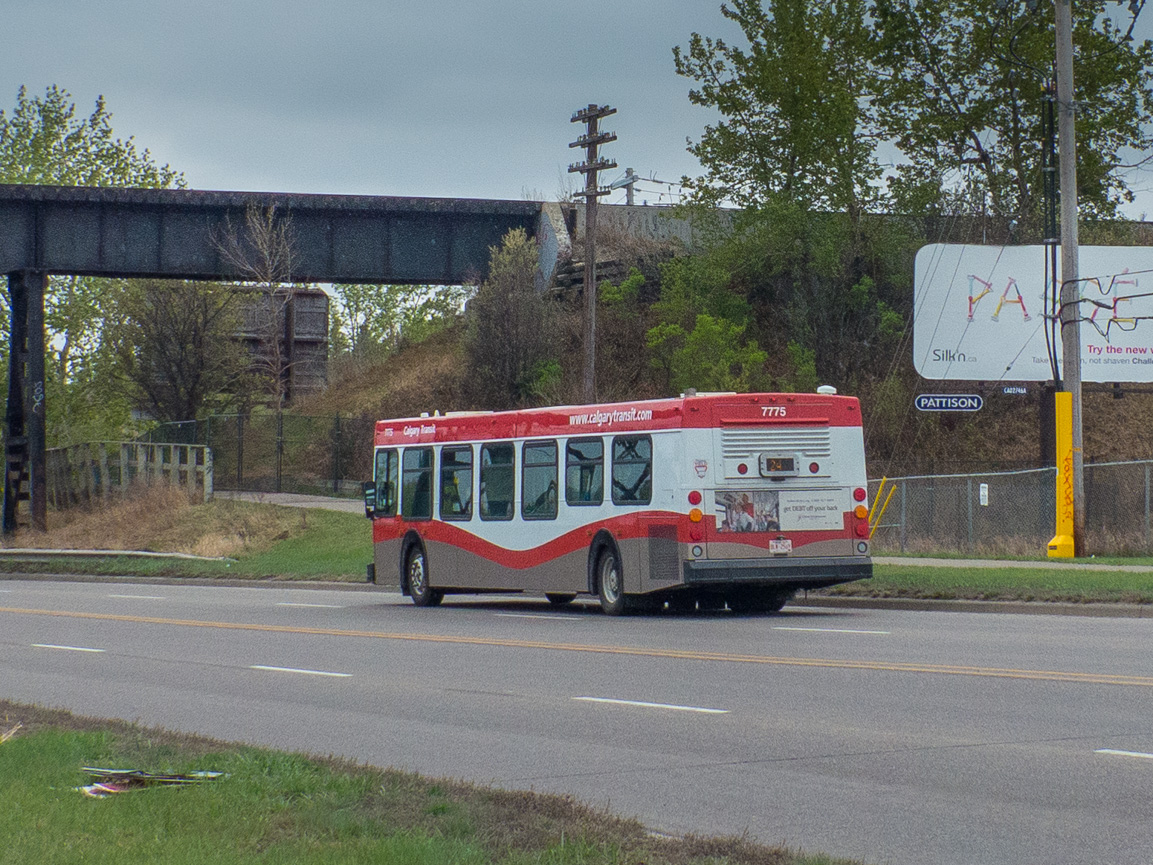
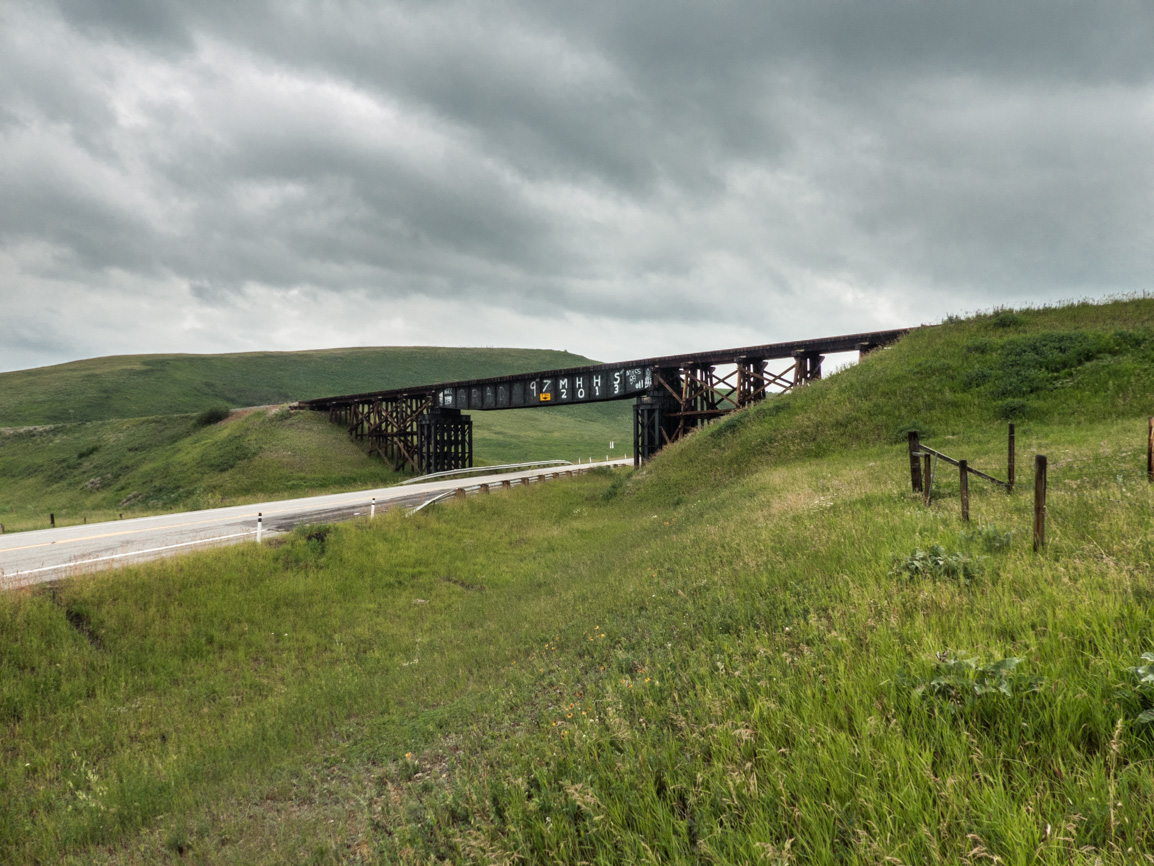
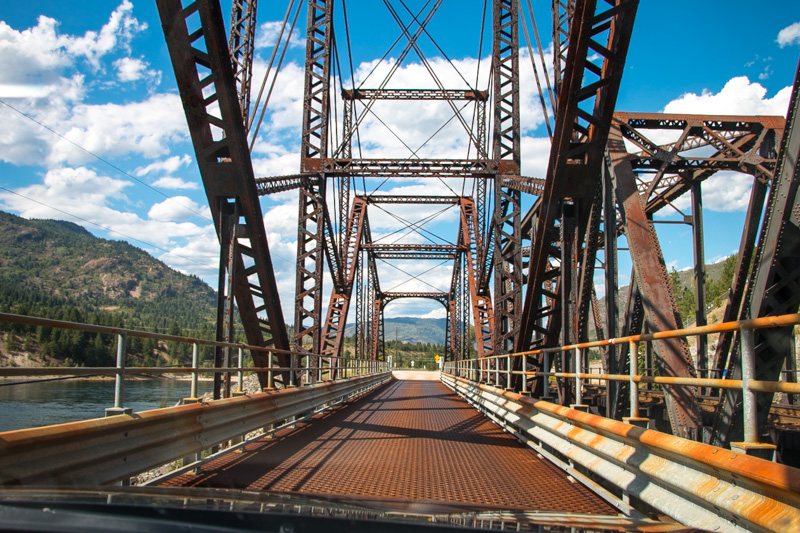
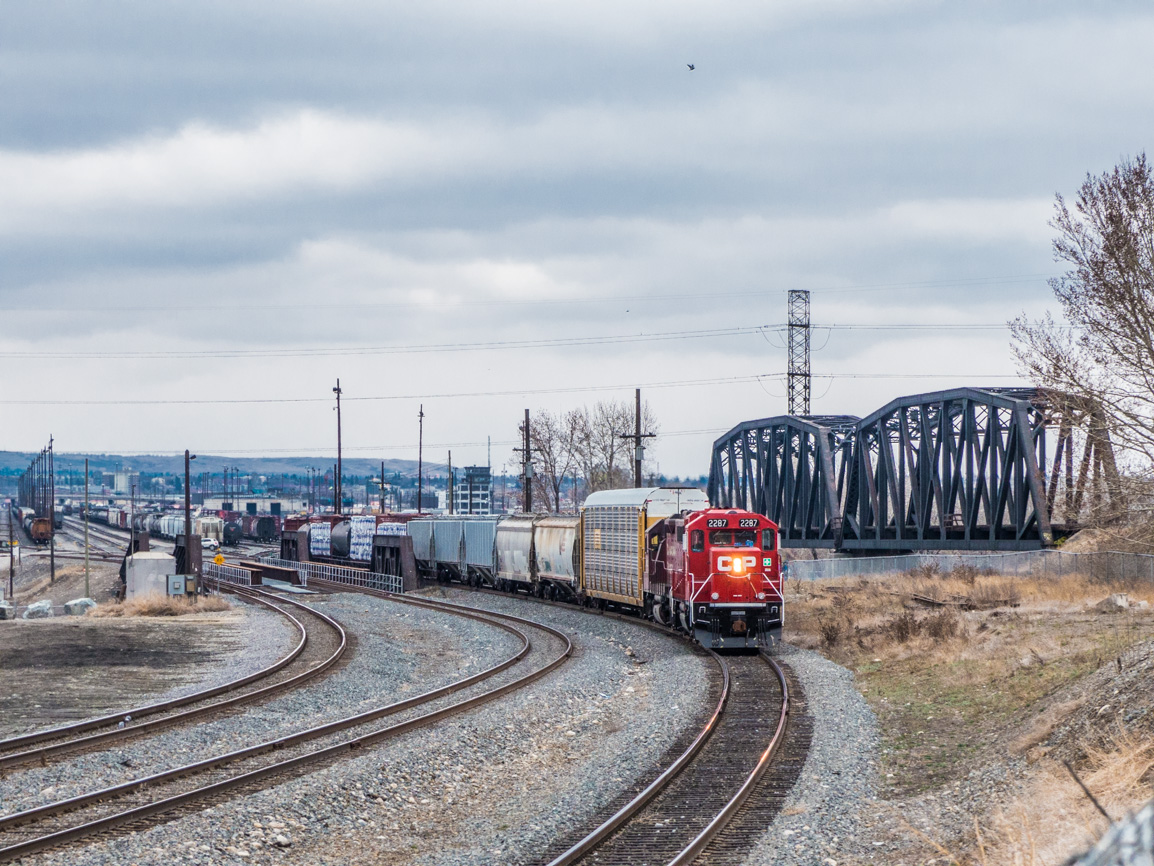
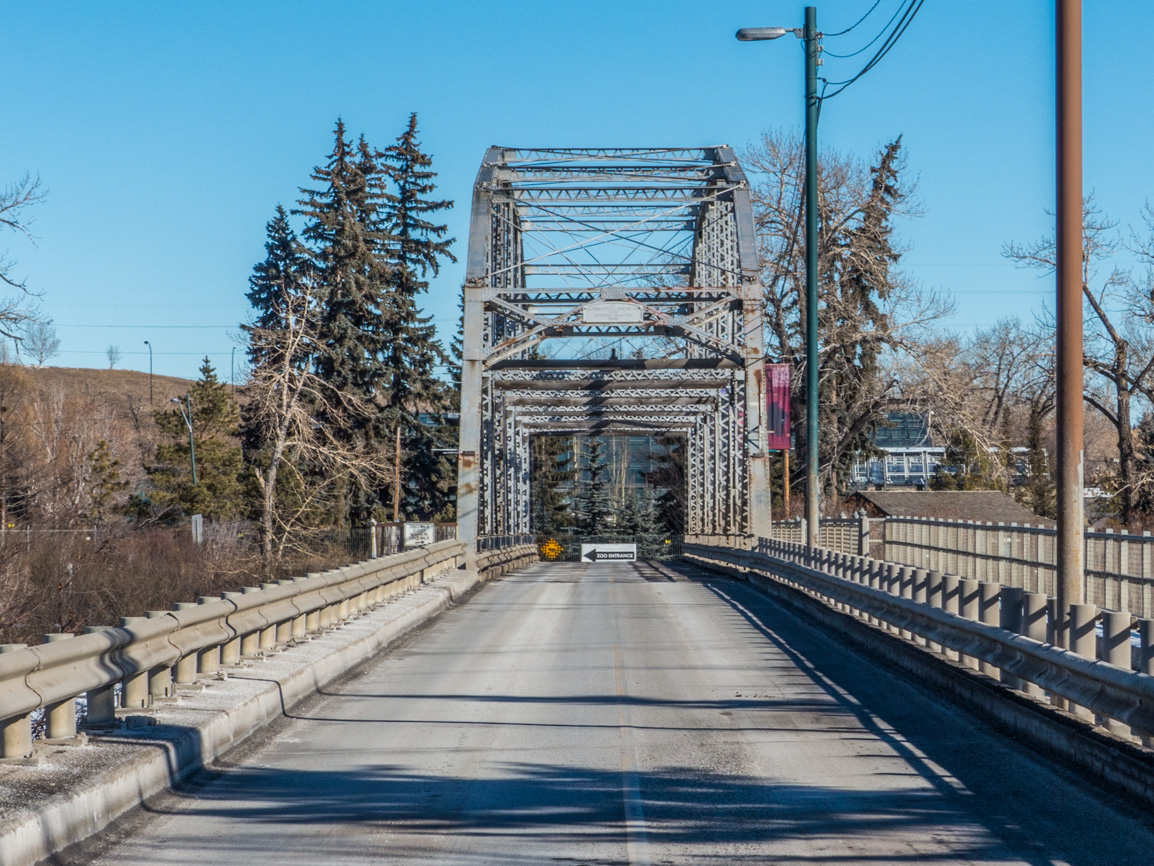
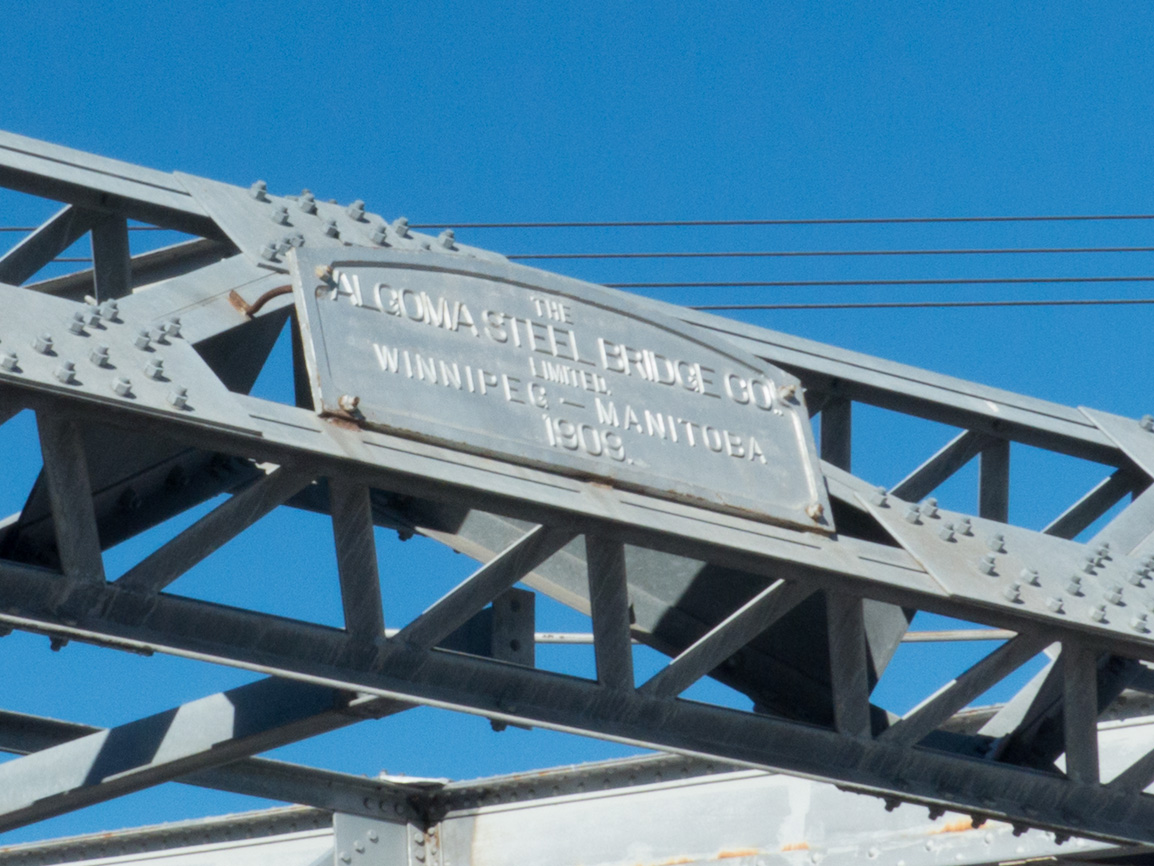
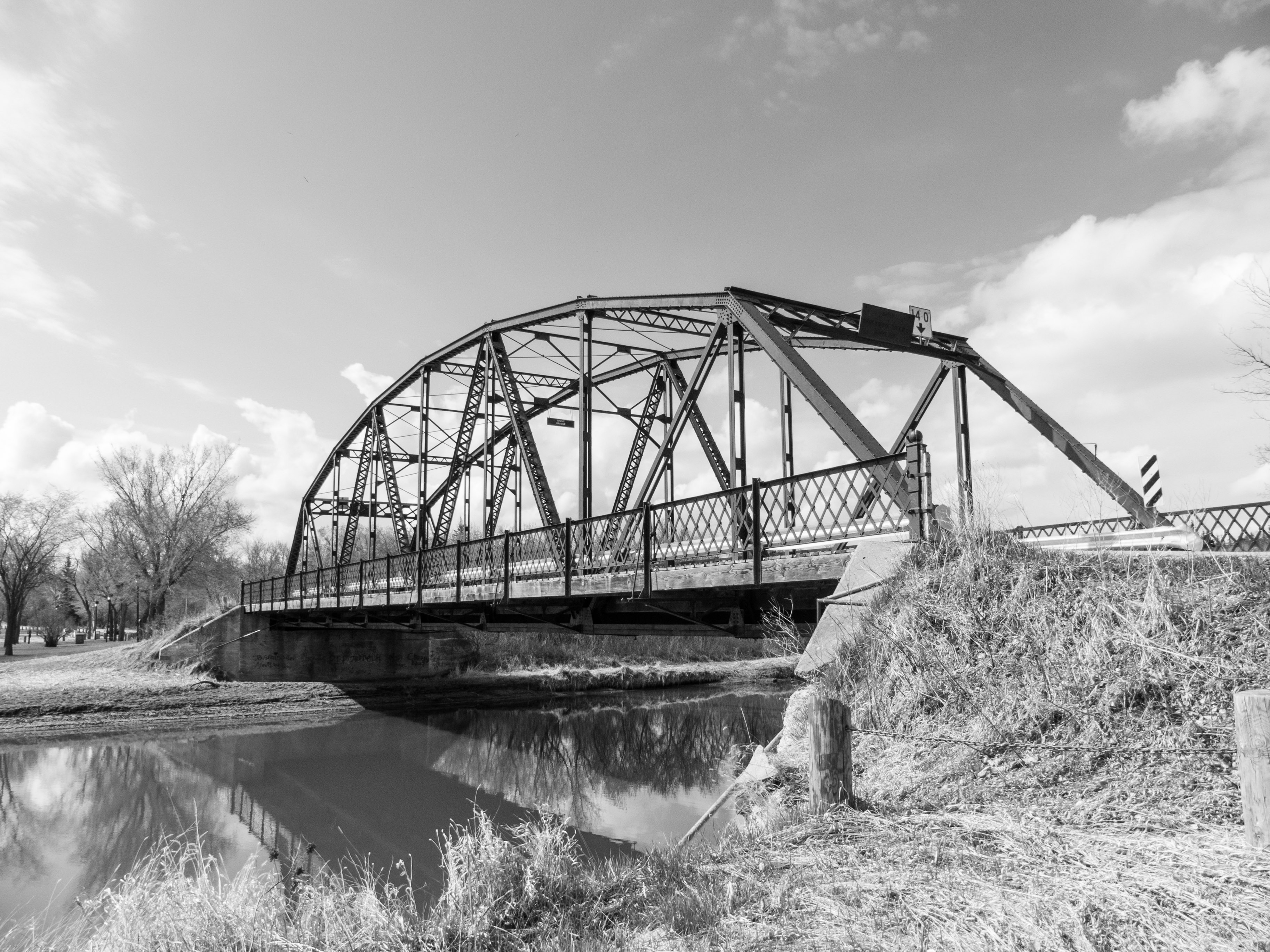
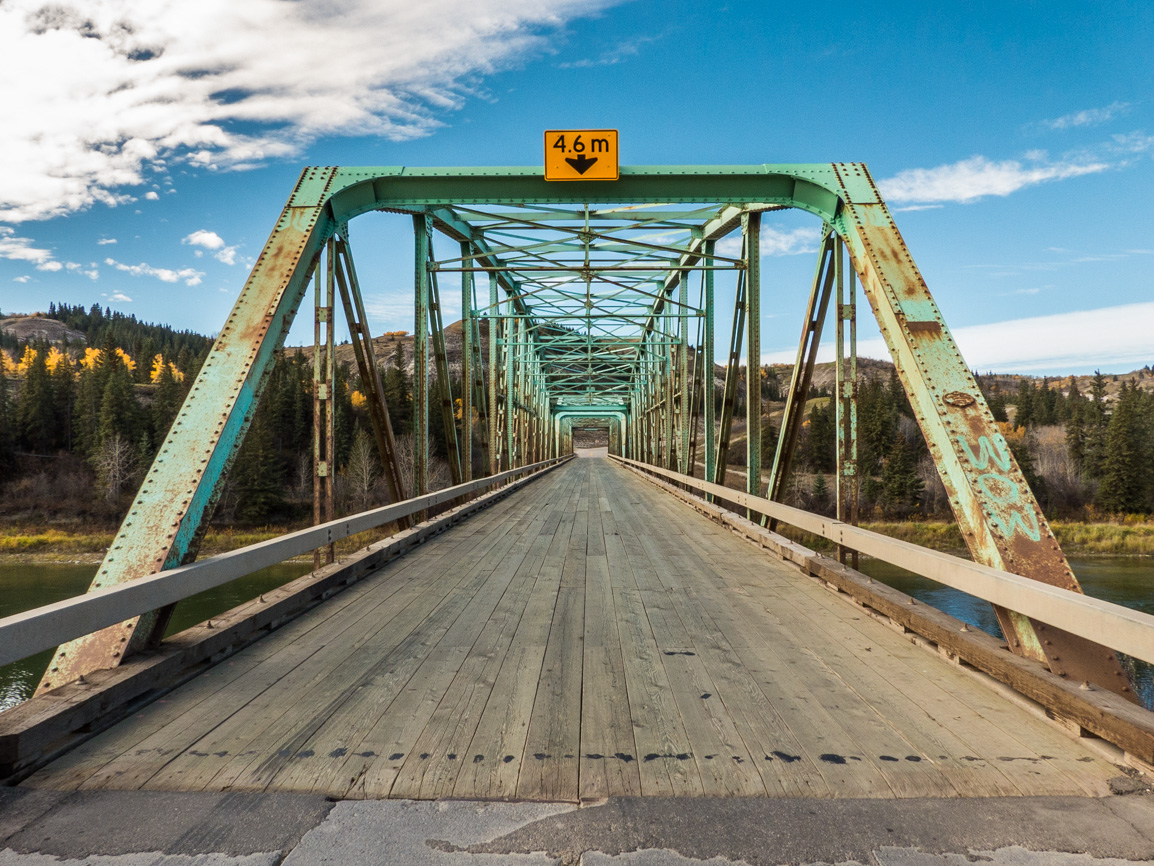
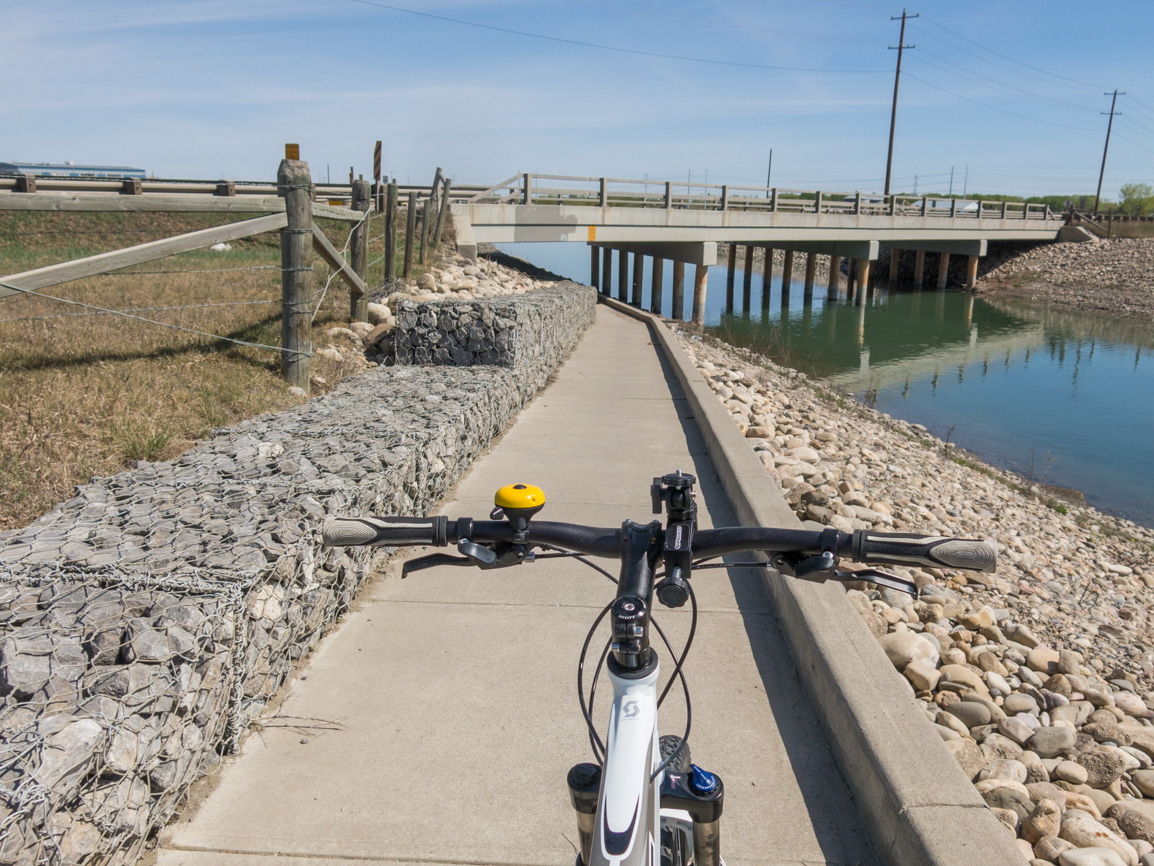
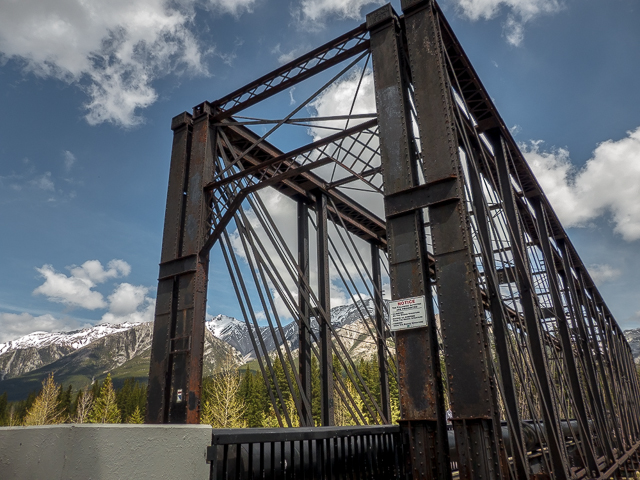
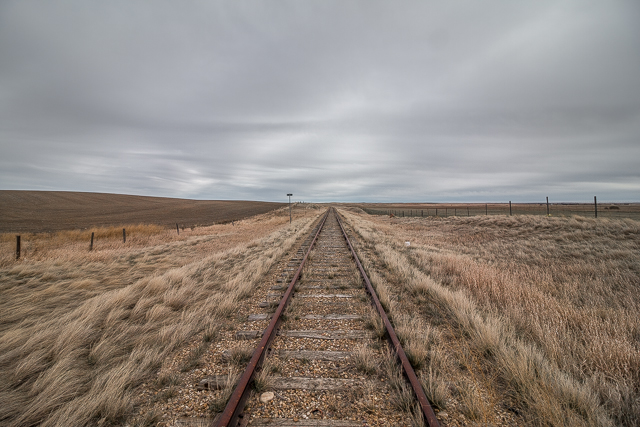
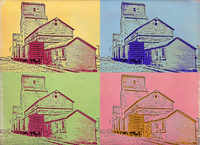






Thanks for the story and the photos Chris! I’m doing some research on East Calgary and i can’t figure out how a person would walk (or ride a horse or bicycle) across the Bow in 1920. Was the 50th Ave bridge open to pedestrians and vehicles?
You are welcome! From 50th you could hook up with Ogden Road which had a bridge across the Bow (put in ca 1900-1910 it’s suggested), a route not all that different from present day.
If you explore this section of rail further, you can see partial bed remains of the old imperial oil refinery spur to the north side of the tracks. the switch was about midway along the embankment leading to the bow river bridge.
Yes, I saw that on Google Earth. I also saw an old photo showing the CN spur into the plant when the place was still in business. The lead looked to be steep.
Do you know of a bridge that consolidated concrete had across the bow river, sometime in the 1960s?
Yes, we’ve heard of it but don’t know much else beyond that. If you to know more, we can help research it. Drop us a line!
I love bridges like this. They look like they were designed by a committee and built with spare parts that were just laying around. It is kind of amazing that there are so many different ways to solve the same problem of carrying a train over an obstacle.
So may different types of spans on this bridge! An interesting one for sure.
I think that is a nasty swipe to CPR – the message above CPR tracks
Take that CPR!
The best skies ever!
They were amazing!
Love the tell tale! What people find on right of ways.
It is a nice find!